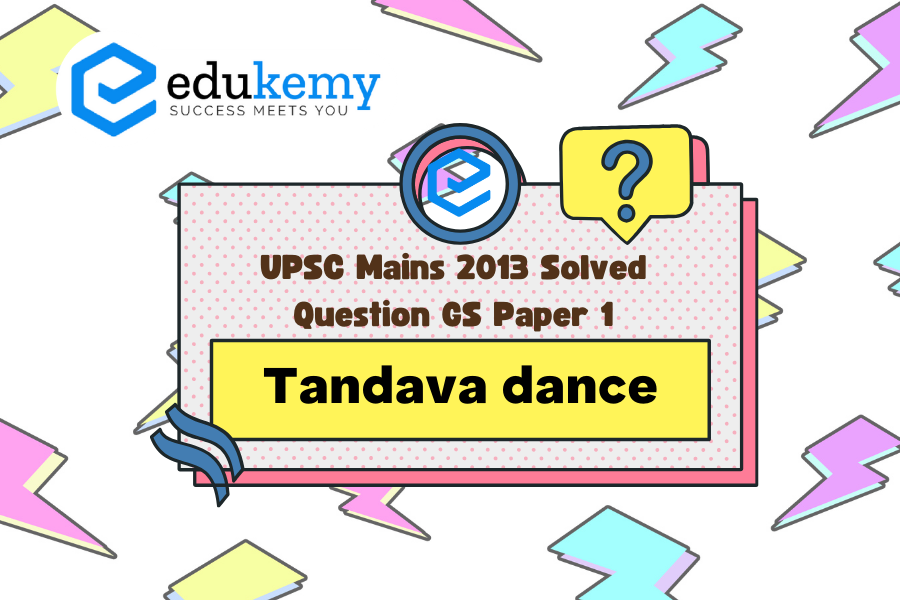The Tandava dance, immortalized in early Indian inscriptions, embodies a profound fusion of rhythm, movement, and spirituality. Revered as a divine art form, it is attributed to Lord Shiva, the cosmic dancer, whose cosmic energy manifests through its vigorous movements. These inscriptions serve as invaluable records, shedding light on the origins and significance of Tandava in ancient Indian culture. Within them, the dance is depicted as a powerful expression of creation and destruction, symbolizing the eternal cycle of life and the cosmic order. Through these inscriptions, Tandava emerges not merely as a dance but as a sacred ritual, connecting mortals to the divine.
Tags: Indian culture.
Contents
Decoding the Question:
- In Introduction, briefly write about the background of Tandava dance.
- In Body, provide details on Tandava dance form.
- Conclude with some important connecting facts of Tandava.
Answer:
Tandava and Lasya, are two basic aspects of Classical Indian Dance. Shiva himself is considered to have invented at least 108 different dances- including the fiercely aggressive Tandava- where he destroys the world at the end of the cosmic cycle.
Natya Shastra talks about Tandava and Lasya. Tandava is the expression of lord shiva’s eternal dance. According to Natya Shastra, Shiva was very much fond of dancing, and he adopted the dance form Tandava which has several specific characteristics, such as:
- Portrayal of power and force.
- It represents the angry mood of Shiva.
- It signifies destruction.
- It symbolises five main divine actions, known as, Shristi, Sthati, Samhar, Tirobhava, and Anugraha.
Ancient Hindu scriptures narrate various occasions when Shiva or other gods have performed the Tandava:
- When Sati jumped in sacrificial fire in Daksha’s Yajna to give up her life, Shiva performed the Rudra Tandava to express his grief and anger.
- The Bhagavata Purana talks of Krishna dancing his Tandava on the head of the serpent Kaliya.
- According to Jain text: Indra performed Tandava in honour of Rishabha’s birth (Jain tirthankar).
- Shivapradosha stotra mentions: when Shiva performs the Sandhya Tandava, the other gods like Brahma, Vishnu, Sarasvati, Lakshmi and Indra play musical instruments and sing Shiva’s praises.
- In some temple sculptures, Ganesha is depicted in Eight armed form, dancing the Tandava.
Through Tandava Shiva terrifies all other gods who plead for Shiva’s mercy. It symbolizes the idea that Shiva is the ‘Destroyer’ among the trinity (Brahma and Vishnu being the others).
In case you still have your doubts, contact us on 9811333901.
For UPSC Prelims Resources, Click here
For Daily Updates and Study Material:
Join our Telegram Channel – Edukemy for IAS
- 1. Learn through Videos – here
- 2. Be Exam Ready by Practicing Daily MCQs – here
- 3. Daily Newsletter – Get all your Current Affairs Covered – here
- 4. Mains Answer Writing Practice – here


